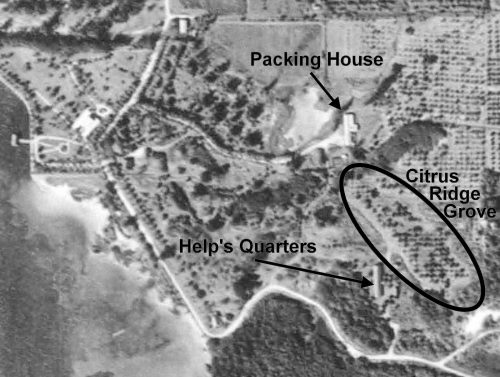In the aftermath of Hurricane Charley, Pineland recently experienced yet another blow, affecting both its tree-filled landscape and another remnant of its early 20th-century history.

Florida
In mid-November, state inspectors discovered traces of the dreaded citrus canker, Xanthomonas axonopodis, in some of the new growth on trees in the middle of the sand ridge known as the Citrus Ridge. The bacterial pathogen, which causes unsightly lesions on citrus fruits, and which can also defoliate severely infected trees and cause fruit to drop prematurely, was also discovered at several nearby yards in Pineland. Under Florida law, all trees within 1,900 feet of the canker must be destroyed. Within a few days, all citrus trees from the Pineland site had been cut down.
Our little grove was one of the last traces of Pineland’s historic citrus industry, which emerged during the first decades of the 20th century and was still thriving as of the time of a 1944 aerial photo showing not only the groves, but also the nearby packing house and help’s quarters, both of which were originally located on the Pineland site property. The only standing structural remnant of this era, a wooden barn still being used for the RRC tractor, was utterly destroyed by Hurricane Charley. And so the subsequent loss of the Citrus Ridge grove leaves only a handful of original coconut and royal palms alongside the historic road that ran between the packing house and the shore (the road is now being restored and maintained thanks to PalmCo, Inc.).
If there is a silver lining to this loss, it is that visitors are now afforded an unimpeded view of the eastern half of the Pineland site surrounding Citrus Ridge. Once the three-year quarantine period expires, new citrus trees can be planted. In the meantime, Citrus Ridge will remain curiously bare, standing in mute testimony to the end of an era in Pineland.
This article was taken from the Friends of the Randell Research Center Newsletter Vol 3, No. 4. December 2004.